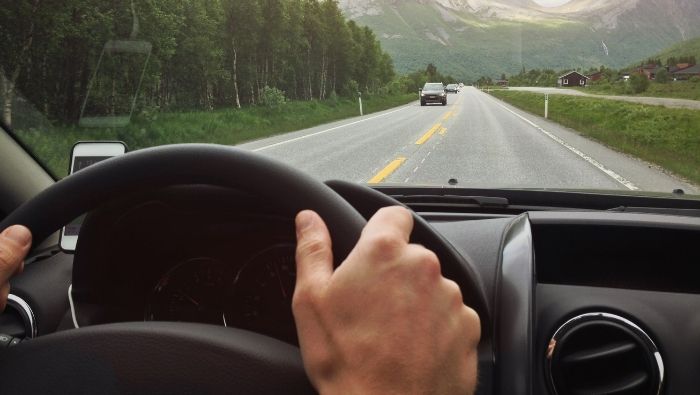A Mechanic Explains How To Get Better Gas Mileage

No matter how high or low gas prices are, there is no reason you shouldn’t be using less gas and saving more money. A mechanic explains how to tame your gas guzzler for bigger savings.
Every vehicle owner, no matter which model they own, desires improved gas mileage during short hops to the store, or driving extended distances for holidays and vacations. It’s called bang for the buck, and sometimes we can feel like we’ve been shooting blanks.
Even the owners of compact foreign make cars are complaining and feeling the crunch. Here are some tips and tricks to help combat unnecessary fuel loss and costs.
Vehicle Preparation
1. Tune your vehicle in compliance with your manufacturer’s specifications.
Check your owner’s manual for these service intervals. Your spark plugs might not have to be replaced for 30,000, 50,000, or 100,000 miles, but it’s wise to tune up when you reach those thresholds. An oil change and a filter do wonders in reducing heat and friction. Friction pulls horsepower, and horsepower pulls extra fuel. If you have EFI (electronic fuel injection), add fuel additive that cleans your injectors. Run a can of additive in your tank with every five tanks.
A new air cleaner element can save you as much as 10% in gas savings. Fuel needs plenty of oxygen to burn correctly in the combustion chamber. A plugged and dirty air filter will starve your vehicle for air and act as a choke, which enriches the fuel mixture.
2. Don’t be afraid to inflate your tires to their maximum allowable tire pressure.
You can even exceed your PSI (pounds per square inch) by two to three pounds without affecting your tire performance or sacrificing riding comfort. Stiffer tires equals less surface contact friction.
3. Have your vehicle aligned at a reputable alignment shop.
A department store is fine for this work since they have the same alignment machines that the dealers have. Proper alignment will keep your tires “planted” on the ground at low- and high-speed driving, as well as cornering. Less tire friction equals better tracking and increased fuel economy.
Sign Up for Savings
Subscribe to get money-saving content by email that can help you stretch your dollars further.
Twice each week, you'll receive articles and tips that can help you free up and keep more of your hard-earned money, even on the tightest of budgets.
We respect your privacy. Unsubscribe at any time.
4. Gut your vehicle of all dead weight.
Remove everything from the floorboards or seats and the trunk space. These items include tools, unneeded baby seats, extra rubber mats, sporting equipment, etc.
If you carry a roof-top luggage rack, unbolt and store it when not in use.
5. Wax your vehicle every three months.
Wax covers the minute pores in paint and clear coat. It creates a slipstream effect, allowing the car to move through the air molecules with less friction. Wash it at least every three weeks.
Driving Habits
1. Purchase fuel whenever you find a deal on it.
Gasoline is basically all the same; it’s a petroleum product that has to meet high standards from the government. You don’t need anything higher than an 87-octane rating unless your vehicle pings, sputters and coughs. Then add a can of octane booster. There’s no such thing as designer gas; octanes in the 90s won’t get you there faster or save fuel. During price wars, tank up.
2. Jackrabbit starts and a heavy foot on the pedal will pour more gas down your intake.
Drive the speed limit or under. Let your automatic transmission shift with your foot slightly off the accelerator pedal. Use cruise control for an automatic and the highest overdrive gear for a manual. Avoid needless down-shifting with a manual transmission; it increases engine RPM, burning more fuel.
3. If you’re stuck in traffic for an extended period of time, shut your engine off.
Extended idling burns extra gas and raises the engine temperature.
4. Please turn off that air conditioner if you’re not broiling in your seat.
The air conditioning compressor robs your engine of horsepower, wasting more gas than any other component on your vehicle. Roll the windows down and enjoy the heat if you can tolerate it. If not, crank up the windows, but only turn the air conditioner on when the cabin temperature reaches your comfort zone. Even running the air conditioner on its lowest setting pulls extra power from your engine.
Reviewed November 2023
About the Author
Chris Stevenson has 35 years in the automotive industry and is the author of Auto Repair Shams and Scams.
Wouldn't you like to be a Stretcher too?
Subscribe to get our money-saving content twice per week by email and start living better for less.
We respect your privacy. Unsubscribe at any time.
Popular Articles
- 7 Habits of Highly Frugal People
- 5 Simple Budget Cuts That Can Save $200 a Month
- How to Track Down Unclaimed Funds Owed You
- 32 Ways to Save Money on Your Utility Bills
- Do You Need Credit Life Insurance When Buying a New Car?
- How to Maximize Profits When Selling Online
- Staying Motivated to Continue Digging Yourself Out of Debt
On After50Finances.com
- 9 Things You Need to Do Before You Retire
- You Didn’t Save Enough for Retirement and You’re 55+
- When Empty Nesters Reorganize and Declutter Their Home
- Reinventing Your Career in Your 50s or 60s
- What Mature Homeowners Should Know about Reverse Mortgages
- 2 Reasons to Collect Social Security Benefits As Soon As Possible

